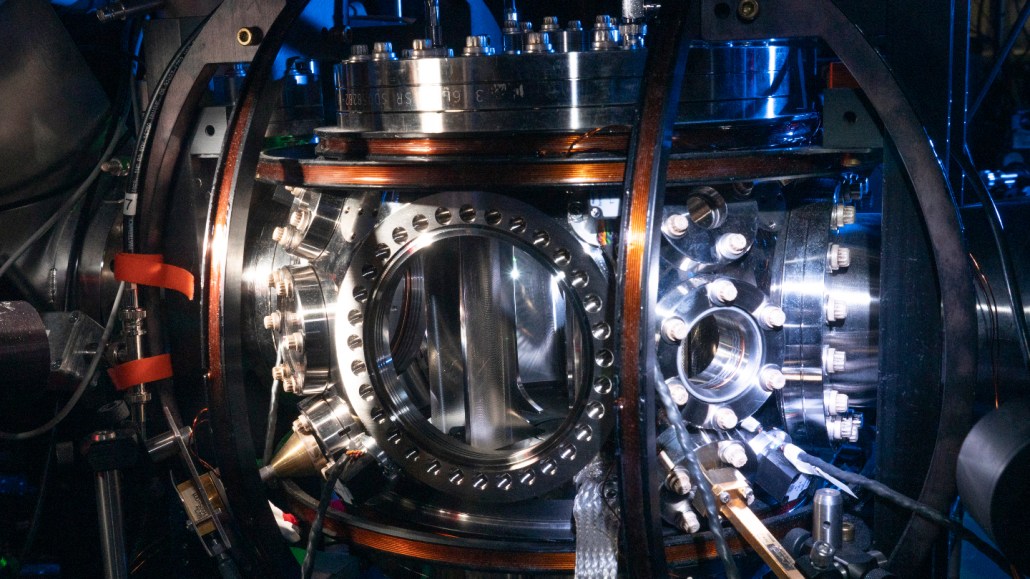
To test whether electrons are truly round, physicists used electrically charged molecules of hafnium fluoride contained within a vacuum chamber (shown).
Casey A. Cass/University of Colorado
- More than 2 years ago
Electrons are really, really round.
A new measurement confirms the subatomic particle’s spherical shape to a record level of exactness, physicists report in the July 7 Science.
That near-perfect roundness deepens the mystery behind how the universe came to be filled with matter as opposed to its counterpart, antimatter. Any asymmetry in the electron’s shape, namely the distribution of the particle’s electric charge, would point to a related asymmetry in the laws of nature, one that could explain this feature of the cosmos.
The measurement — of a property known in physicist-speak as the electric dipole moment of the electron — is twice as precise as the previous best measurement of the electron’s shape (SN: 10/17/18).
“I don’t think Guinness tracks this, but if they did, we’d have a new world record,” says physicist Tanya Roussy of the University of Colorado Boulder. The new measurement is so precise that, if an electron were the size of Earth, any asymmetry in its shape would have to be on a scale smaller than an atom.
To gauge the particle’s shape, Roussy and colleagues looked at whether electrons pivoted in an electric field. If electrons weren’t round but slightly egg-shaped, an electric field would exert a torque on them, much as gravity topples an egg standing on its end.
To see that torque, the team looked for changes in the energy levels of electrically charged molecules of hafnium fluoride. Any torque on the electrons would give the molecules different energy levels depending on which direction the “egg” was oriented relative to an electric field. The researchers found no difference in the molecules’ energy levels, confirming the electron’s roundness.
At their most basic level, electrons are pointlike particles, without a definite size and shape. But in quantum field theory, electrons can be thought of as surrounded by temporary “virtual” particles that pop in and out of existence, giving each electron a spherical halo of electric charge. If that halo were found to be just slightly egg-shaped, that could point to how the universe became lopsided toward matter.
The Big Bang should have created matter and antimatter in equal parts — the two are mirror images of one another, with opposite electric charges. But matter in our universe is common while antimatter is scarce. Theoretical physicists have suggested that the existence of certain subatomic particles could have tipped the balance toward matter (SN: 9/22/22). If those particles exist, they would also transiently appear and disappear around the electron, in such a way as to make it oblong.
Such particles would be so massive, and would therefore require so much energy to produce, that they would not be discoverable even at the world’s biggest particle accelerator, the Large Hadron Collider near Geneva. That makes sensitive studies of the electron’s roundness an important test for particle physicists. And such experiments are poised to improve further, testing for particles of even larger masses, says physicist David DeMille of the University of Chicago, one of the scientists behind the previous best measurement of the electron’s roundness.
For now, the new result shows no trace of any hidden particles, leaving unsolved the mystery of how matter gained the upper hand. And that, DeMille says, “leaves us with the question of what is out there.”







